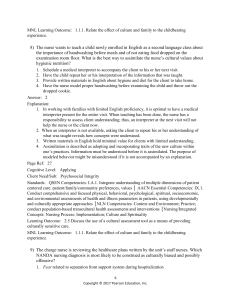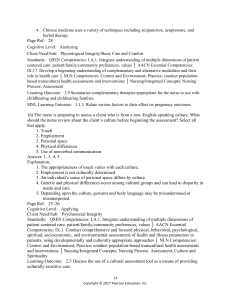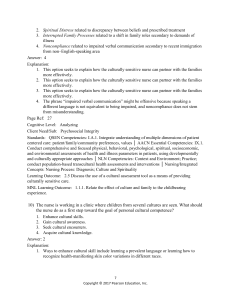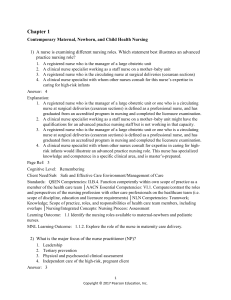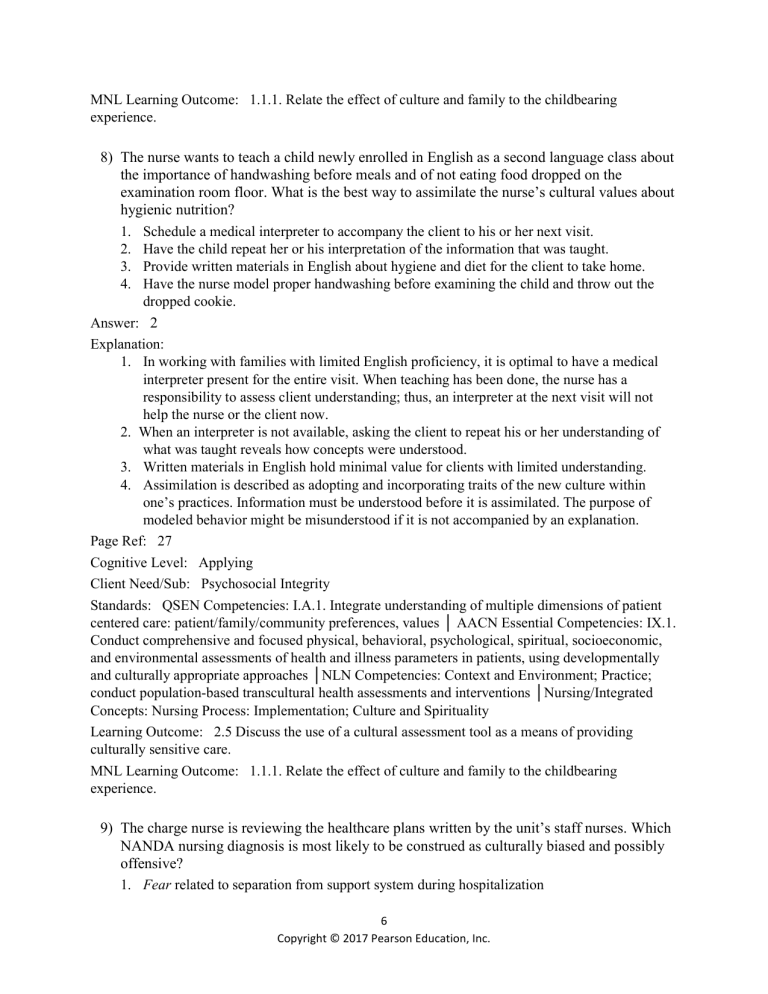
MNL Learning Outcome: 1.1.1. Relate the effect of culture and family to the childbearing experience. 8) The nurse wants to teach a child newly enrolled in English as a second language class about the importance of handwashing before meals and of not eating food dropped on the examination room floor. What is the best way to assimilate the nurse’s cultural values about hygienic nutrition? 1. Schedule a medical interpreter to accompany the client to his or her next visit. 2. Have the child repeat her or his interpretation of the information that was taught. 3. Provide written materials in English about hygiene and diet for the client to take home. 4. Have the nurse model proper handwashing before examining the child and throw out the dropped cookie. Answer: 2 Explanation: 1. In working with families with limited English proficiency, it is optimal to have a medical interpreter present for the entire visit. When teaching has been done, the nurse has a responsibility to assess client understanding; thus, an interpreter at the next visit will not help the nurse or the client now. 2. When an interpreter is not available, asking the client to repeat his or her understanding of what was taught reveals how concepts were understood. 3. Written materials in English hold minimal value for clients with limited understanding. 4. Assimilation is described as adopting and incorporating traits of the new culture within one’s practices. Information must be understood before it is assimilated. The purpose of modeled behavior might be misunderstood if it is not accompanied by an explanation. Page Ref: 27 Cognitive Level: Applying Client Need/Sub: Psychosocial Integrity Standards: QSEN Competencies: I.A.1. Integrate understanding of multiple dimensions of patient centered care: patient/family/community preferences, values │ AACN Essential Competencies: IX.1. Conduct comprehensive and focused physical, behavioral, psychological, spiritual, socioeconomic, and environmental assessments of health and illness parameters in patients, using developmentally and culturally appropriate approaches │NLN Competencies: Context and Environment; Practice; conduct population-based transcultural health assessments and interventions │Nursing/Integrated Concepts: Nursing Process: Implementation; Culture and Spirituality Learning Outcome: 2.5 Discuss the use of a cultural assessment tool as a means of providing culturally sensitive care. MNL Learning Outcome: 1.1.1. Relate the effect of culture and family to the childbearing experience. 9) The charge nurse is reviewing the healthcare plans written by the unit’s staff nurses. Which NANDA nursing diagnosis is most likely to be construed as culturally biased and possibly offensive? 1. Fear related to separation from support system during hospitalization 6 Copyright © 2017 Pearson Education, Inc.
